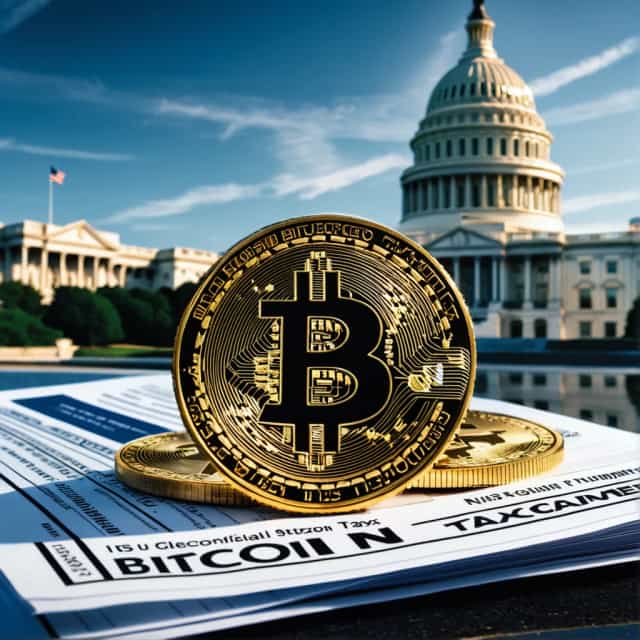
Image source: Block Media
U.S. Government Shutdown: Budget Deadlock Sparks Economic Data Disruptions and Market Ripples
The U.S. federal government has entered its first partial shutdown in seven years after Democrats and Republicans failed to agree on a budget, creating a ripple effect across economic data releases, federal operations, and financial markets. The last major shutdown of comparable scope occurred on December 22, 2018, lasting 35 days. This latest stalemate has already led to operational freezes in key departments, triggering uncertainty for businesses, federal employees, and consumers alike.
Suspension of Vital Economic Data Releases
The shutdown has forced the U.S. Department of Labor to indefinitely suspend the release of crucial economic reports. Among those affected are the weekly initial jobless claims report, originally scheduled for October 3, and the September jobs report, expected on October 4. Both datasets are critical for Federal Reserve officials tasked with evaluating monetary policy and interest rate adjustments. Without access to these metrics, Wall Street investors will pivot to private-sector alternatives, like ADP's employment reports, for insights on labor market conditions.
The absence of government reports introduces volatility into financial markets, which thrive on clarity and data accessibility. Experts worry that prolonged gaps in statistical releases could skew economic projections and monetary decision-making as uncertainty mounts.
IPOs and Corporate Finance Activities Face Setbacks
The Securities and Exchange Commission (SEC) has paused the review of Initial Public Offerings (IPOs) and other corporate financial disclosures during the shutdown. These delays mirror those seen in the 2018–2019 shutdown, when the freeze disrupted capital-raising activities for numerous companies. While small to mid-sized firms seeking IPO clearances may suffer setbacks, historical trends suggest the broader stock market remains relatively resilient during shutdown periods.
Notably, data from past shutdowns indicates that indices like the S&P 500 often continue to rise, reflecting investor optimism despite federal deadlocks. However, the duration and severity of the current shutdown may determine its ultimate market implications.
Social Security, Medicare, and Postal Services Uninterrupted
Core government services tied to Social Security (SSA), Medicare, and Medicaid will sustain their payment schedules, ensuring millions of Americans continue receiving benefits. However, some auxiliary functions, including new applications and card issuance processes, will be delayed.
Separately, the U.S. Postal Service (USPS), which operates primarily on independent revenue, will maintain normal operations unaffected by the congressional budget impasse. This ensures ongoing mail and package delivery, providing some reassurance amid widespread uncertainty.
750,000 Federal Employees Furloughed Without Pay
Approximately 750,000 federal employees, classified as non-essential, are being placed on unpaid furloughs for the duration of the shutdown. Essential workers, such as military personnel and air traffic controllers, will continue their duties without pay until the government reopens.
Historically, federal employees receive retroactive pay once shutdowns conclude, but federal contract workers often face permanent financial losses. Concerns loom over potential mass layoffs within programs left unfunded, a scenario previously hinted at during prior shutdowns under the Trump administration.
Economic Impact Tied to Shutdown Duration
The economic fallout from the budget stalemate will largely depend on how long the shutdown persists. Analysts at Stifel Securities have pointed to the 2018–2019 shutdown, which shaved 0.2 percentage points off GDP growth, as a cautionary example. A brief shutdown may have negligible effects, but a prolonged one could erode consumer confidence, stall economic activity, and diminish corporate revenues.
These potential macroeconomic consequences add urgency to finding a resolution, but with partisan negotiations at an impasse, the timeline for reopening the government remains uncertain.
Sectors Hit Hard: Aviation, Environment, and Tourism
The shutdown’s impact is being felt across various sectors, including aviation, environmental protection, and tourism. Although air traffic controllers and TSA agents continue working as essential personnel, operating without pay may lead to staffing shortages and heightened absenteeism. This mirrors the significant airport delays that occurred during the 2019 shutdown.
Additionally, the Environmental Protection Agency (EPA) has halted oversight at more than 1,200 hazardous waste and water safety sites, raising risks of unchecked contamination. Meanwhile, the National Park Service has closed most federally managed tourist attractions, prompting concerns over unmanaged waste and vandalism at sites that remain open without staffing. These disruptions amplify the shutdown’s effects, tangibly impacting everyday American life.
Precious Metals and Cryptocurrencies Remain Stable
In financial markets, the shutdown's uncertainty has driven investments in safe-haven assets. December gold futures on the New York Commodities Exchange (COMEX) rose 0.45%, reaching $3,890.6 per ounce as of 1:05 p.m. KST on October 1, marking near-record highs. Meanwhile, Bitcoin (BTC) maintained stability, trading at $114,406, per CoinMarketCap’s 24-hour data.
Gold’s performance underscores its enduring appeal during moments of policy instability, while Bitcoin’s relatively calm trading suggests less sensitivity to the events unfolding in Washington, D.C.
Conclusion: Implications of the Federal Government Shutdown
The current U.S. government shutdown highlights a recurring challenge in American politics: the difficulty of reconciling partisan differences to secure federal funding. Its immediate effects, from halts in economic data releases to furloughs for hundreds of thousands of government employees, are already reverberating through various sectors.
While the stock market may remain resilient in the short term, a prolonged impasse could significantly amplify economic disruptions, damage consumer confidence, and strain federal resources. The clock is now ticking for lawmakers to find a resolution, with far-reaching consequences hanging in the balance.










